REI Wonderland V.S. The North Face Wawona (I Bought Both Tents!)
This page contains affiliate links, and that means that I may earn a commission if you buy something, at no extra cost to you. You can find my full disclosure policy here.
I have both the REI Wonderland 6-Person Tent and The North Face Wawona 6-Person Tent, and in this article, I’ll go through all 17 differences between these 2 tents. First, a quick summary:
Both the REI Wonderland and The North Face Wawona are 3-season summer camping tents. However, the biggest difference between these two tents are the conditions they’re best suited for. The Wonderland is better for just fair weather, while the Wawona will protect you from any kind of rain and wind.

RELATED: Best 6-Person Tents
| Characteristics | Wonderland 6 | Wawona 6 |
|---|---|---|
| Peak Height | 81 inches | 77 inches |
| Tent Shape | Cabin | Dome |
| Length | 120 inches | 116 inches |
| Width | 99 inches | 94 inches |
| Base Area | 82.5 square feet | 75.7 square feet |
| Queen Beds | 2 | 1 |
| Room Divider | Yes | No |
| Rooms | 2 | 1 |
| Door Zippers | YKK | SBS |
| Windows | 4 | 3 |
| Vestibule Area | None | 51.0 square feet |
| 1-Hour Rain Test | Failed | Passed |
| Vents | (0) | 4 |
| Pole Quality | Aluminum | DAC MX |
| Carry Bag | Side-loading | Top-loading |
| Pack Away Timing | 16.5 minutes | 14 minutes |
| Set Up Timing | 19.5 minutes | 20 minutes |
| Weight | 23.0lbs. | 19.4lbs. |
If you enjoyed this video, do consider subscribing to my YouTube channel:
Check out The North Face Wawona 6:
Or, check out the REI Wonderland 6:
First, let’s go through how the Wonderland did better than the Wawona.
1. Peak Height
Wonderland 6
First up, for peak height, the Wonderland comes in at about 81 inches.
This is a pretty tall peak height; for me to reach the top of the tent, I have to not only stretch my arm upwards as much as I can, but I also have to stand on tiptoes at the same time.
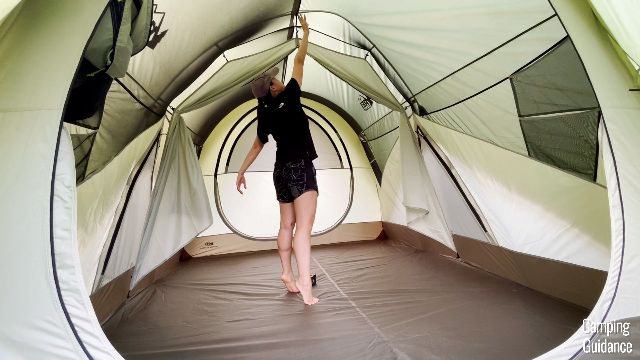
Wawona 6
On the other hand, the Wawona has a peak height of 77 inches, or 4 inches lower.
77 inches isn’t the tallest peak height I’ve seen, and I can easily reach the top of the tent by just raising my arm up. I don’t even have to stand on tiptoes.
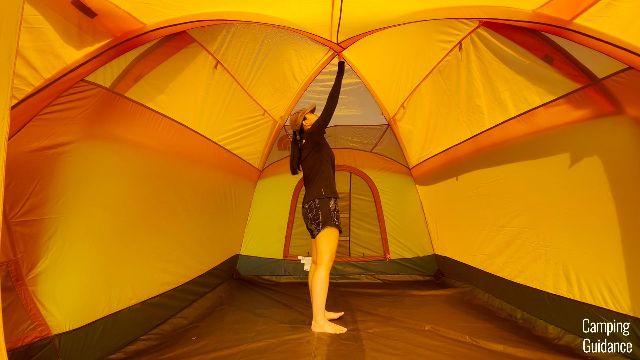
2. Livable Space
And it’s not just the peak height that the Wonderland did better in. It also has much more livable space than the Wawona. Here’s why.
Wawona 6
For the Wawona, which is a dome-shaped tent, the peak height is only at the center.
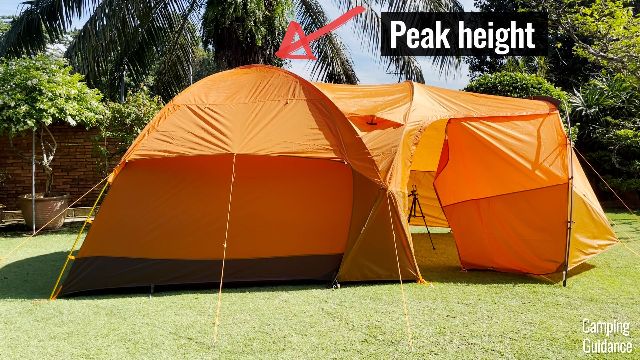
In fact, when I take just 2 steps away from the peak height, my head would touch the side of the tent right here.
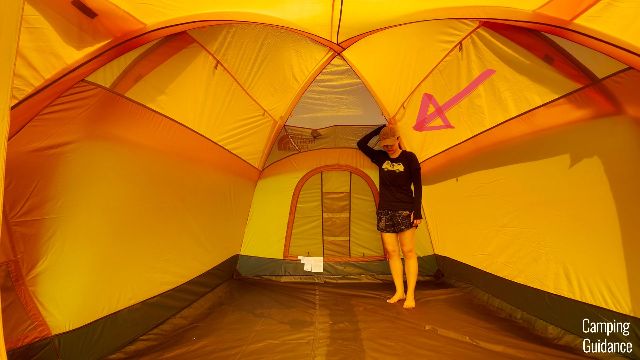
Wonderland 6
However, for the Wonderland, I got the peak height, give or take a few inches, across the entire length of the tent, which is super cool.
The height at the extreme left measured 77 inches, while the height at the right measured 76 inches. So, much roomier than the Wawona, for sure.

3. Side Walls
Still on the livable space issue, I wanna talk a little bit about the side walls too.
Wawona 6
For the Wawona, the walls slope inwards quite a bit, like every other dome tent, so, when I stretch my arms out, it touches the sides of the tent very easily, like this.
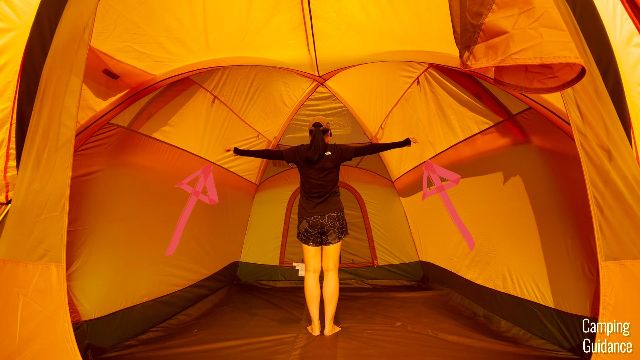
Wonderland 6
On the other hand, with the Wonderland, it has these U-poles (I call them U-poles because they look like an inverted U), and these U-poles create extremely vertical side walls, especially the poles at the extreme right and left of this tent.

I can press my body against the side wall of this tent, and stand completely upright against the wall, which basically shows you how vertical it is.

4. Sleeping
Wonderland 6
So, when I slept at the very sides of this Wonderland (like what I’m doing in the picture below), I never felt as squished or claustrophobic as I did when I slept in other tents.

In the Wonderland, I could raise my arms up no problem, without ever touching the wall. I could even sit up from my pad, and the wall is still a good 10 inches away from my head.
Wawona 6
On the other hand, for the Wawona, even with just 2 queen beds inside the tent, it somehow still felt pretty tight at the sides.
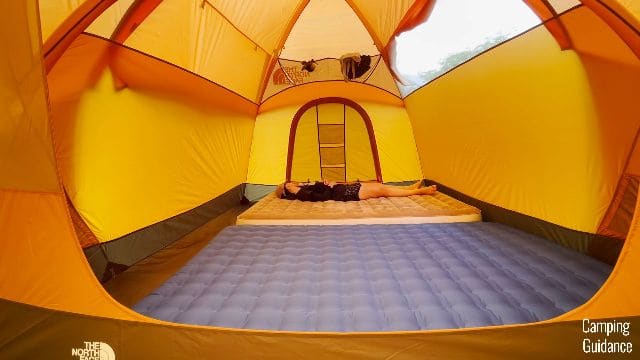
Here’s a closer look at what sleeping at the sides would look like. Not exactly the most spacious. Notice how the wall slants inwards quite a bit in the picture below. When I sat up, my head easily grazed the wall of the tent.

And that’s just with 4 people inside the tent, on 2 almost queen sized beds, not even 6 people, and that was even more claustrophobic (see picture below).
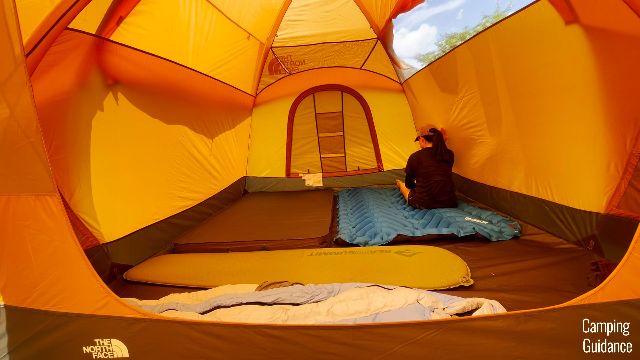
5. Base Area
Wonderland 6
For the base area, I measured the length of this Wonderland 6 to be about 120 inches, and I measured the width to be about 99 inches. This is right about the marketed dimensions of 120 by 100 inches, and this gave me a total base area of 82.5 square feet.

Wawona 6
For the Wawona though, I measured the length to be about 116 inches, and the width to be about 94 inches, giving me a total base area of just 75.7 square feet, which is quite a bit smaller than it should have been.
(The marketed floor area is supposed to have been 86.11 square feet. The difference is humongous! And not in a good way.)
6. Room Divider
While the Wonderland comes with 1 room divider, allowing me to split the tent into 2 rooms, the Wawona didn’t come with any room divider.
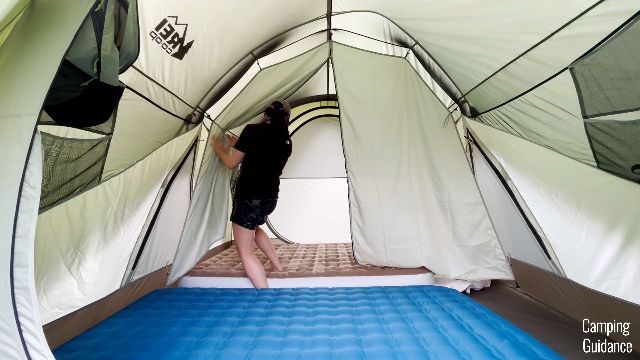
I really quite liked the Wonderland’s divider, it has a zip in the middle so that I could easily access either room without ever having to take down the entire divider, the fabric isn’t too see-through, and also the gaps around the divider aren’t too big.
7. Doors
The Wonderland also has better quality doors than the Wawona. Here’s why.
Wonderland 6
The Wonderland has 2 doors, one on the left, and the other on the right.
Both are exactly the same, and both equally huge, each measuring 66 inches in length, by 64 inches in width. Notice how they take up almost the entire wall of the tent.

The zipping experience was also really good. I could unzip or zip up the entire door, and this takes just 3 seconds. I could do so completely one-handed, with no fumbling at all.

After that, all I had to do was just tuck the door fabric into one of the pockets next to the door, taking another 4 seconds to do so. Very quick and very user-friendly.
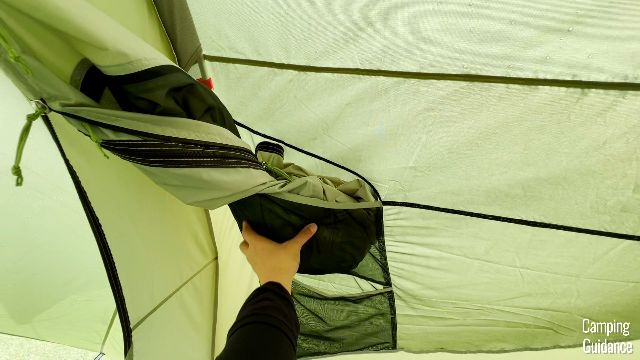
Wawona 6
The Wawona’s front door has lots of the same pros, like very huge, with the same snag-free, one-handed, 3-second zipping experience.

However, the thing is, after that, to keep the door open, you gotta roll the fabric up neatly, and tie it to the top with these 2 toggles, so not quite as user-friendly as the Wonderland’s door pockets, because it takes about 15 seconds to tie the door up.
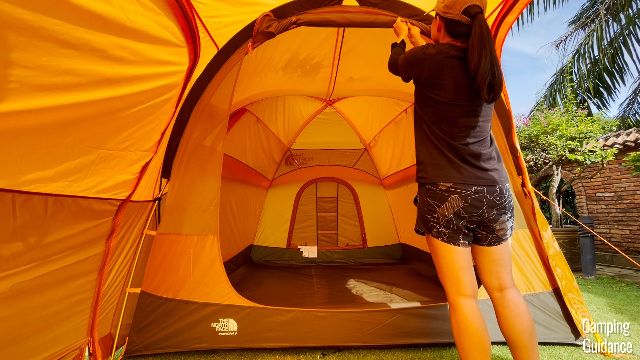

And the back door of the Wawona is not quite as user-friendly as well.
To keep this door open, you’ve got to unzip not just the door fabric, you’ve got to unzip the inner window fabric as well, then you’ve got to tie up the inner window fabric first, before you can tie up the door fabric. Notice the 2 distinct layers of fabric in this picture below:

On top of that, this back door is so small, so definitely nowhere as good as the Wonderland.
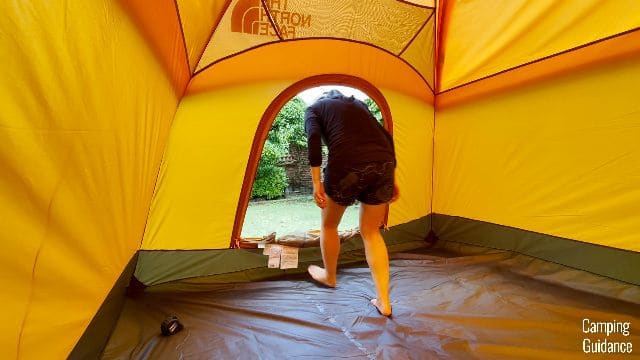
8. Zipper Quality
Oh, and one small point here on zipper quality, the Wonderland’s doors come with 2 YKK zippers each, while the Wawona’s doors come with 2 SBS zippers each, so a grade lower than YKK for sure.
9. Hot Day Ventilation
The Wonderland also easily beats the Wawona when it comes to hot day ventilation.
Wonderland 6
When I take the rainfly off the Wonderland, and I recommend doing so for sunny days, check out how much mesh there is on this tent.

There’s an insane amount, the mesh doesn’t just cover only the roof, it extends down the sides of the tent as well, and I think easily more than half the tent is covered in mesh.

Adding in the cross-ventilation of the 2 doors, hot day ventilation in the summer is simply incredible.
Wawona 6
As for the Wawona, it does have a nice front wall of mesh, plus a mesh roof up top, but notice that it doesn’t extend down quite as much as the Wonderland’s.
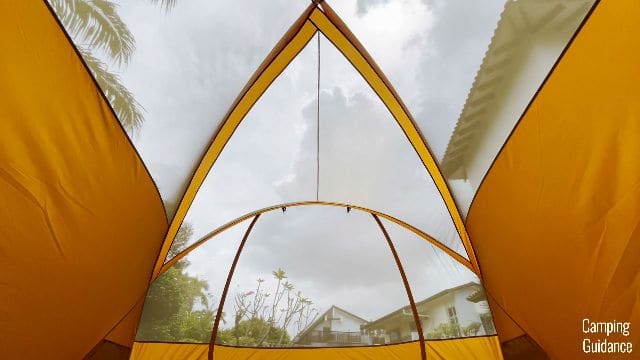
10. Windows
Wawona 6
There’s also a window at the back of the Wawona, plus 2 windows at the sides of the Wawona, for a total of 3 windows altogether.
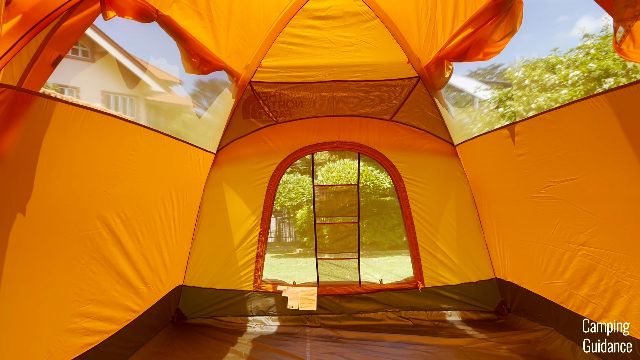
Wonderland 6
But that’s nothing compared to the windows in the Wonderland, where I got to enjoy 360 views, because of not just the 2 half-door windows (dimensions of 54 x 26 inches each), but also the 2 bottom triangle windows (dimensions of 32 x 28 inches each).
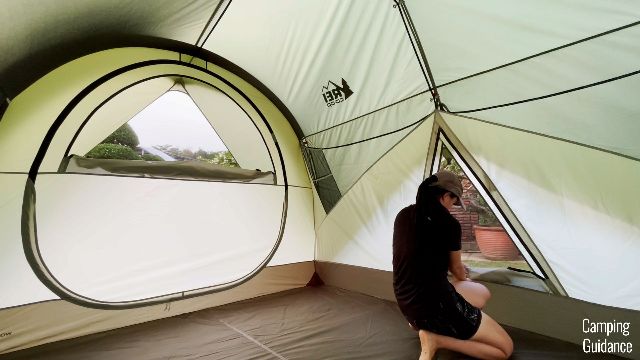
I really loved that I was able to sit down or lie down and look out at the same time.

And now, let’s go through all the ways that the Wawona beats the Wonderland.
11. Vestibule
The Wonderland may have a bigger inner tent base area, but the Wawona has the biggest, most awesome vestibule I’ve ever seen, coming in at a whopping 51.0 square feet.
Now, for the vestibule sizing, I’ve got my REI Camp X Chair (left) and my REI Camp Xtra Chair (right), which is one of the biggest camping chairs that I have, and both these chairs fit perfectly into the vestibule with a ton of leftover space for even a camping table.

When I re-arrange both these chairs like this (pictured below), they really fit perfectly as well, so you get tons of flexibility on how you wanna store your stuff in the vestibule.

I love having the vestibule to store wet gear, especially on rainy days, and we’re gonna go through that next.
12. Rain Protection
For rain protection, that’s easily where the Wawona beats the Wonderland.
Wawona 6
I put my Wawona 6 through days of thunderstorms, the heaviest rain I’ve seen all year, it was so bad that my entire yard was completely flooded, the entire bottom of the Wawona was sitting in inches of water, and this tent still passed with absolutely flying colors. There was no leaking, at all.
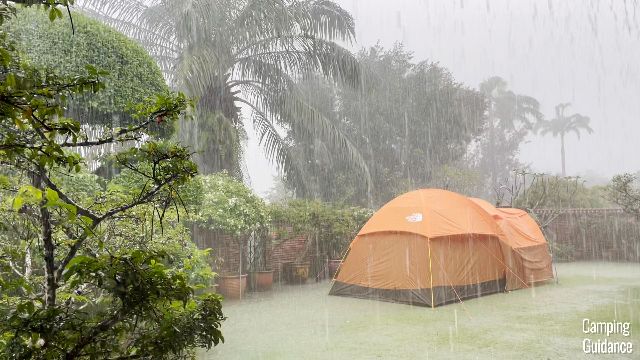
Easily the one of the best rainproof family camping tents I’ve ever tested.
Wonderland 6
As for the Wonderland 6 though, I put it through about 1 hour of heavy rain, followed by a few hours of light rain after, and in the morning after the rain stopped, I found that the divider loops at the bottom of the tent have started leaking water into the tent.
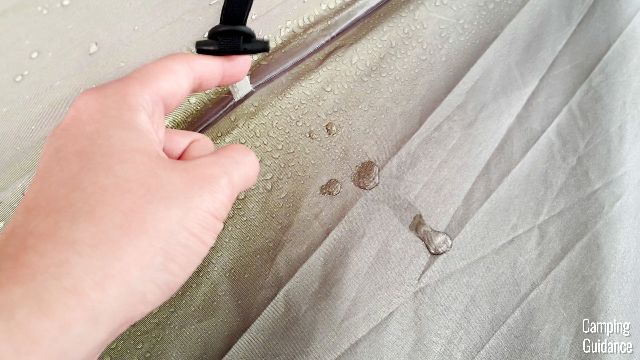
These divider loops are right at the bottom of the tent, and the rainfly doesn’t cover this part of the Wonderland at all, so it’s the most vulnerable seam to the heavy rain, for sure.

13. Vents
As for rainy day ventilation, here’s where the Wawona trumps the Wonderland again.
Wawona 6
The Wawona has 2 window vents, 1 on each side of the tent, and here’s what one of them looks like:
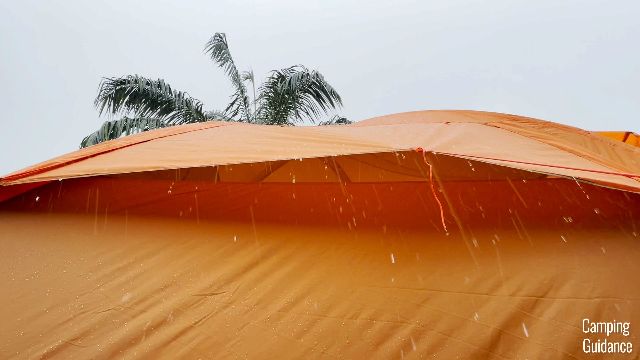
On top of that, the Wawona also has 2 of these smaller vents nearer the front of the tent, so 4 vents altogether.
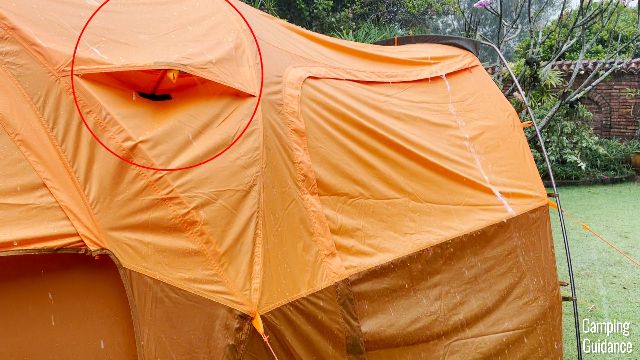
Wonderland 6
On the other hand, the Wonderland has just these 2 above door vents, 1 vent over each door.
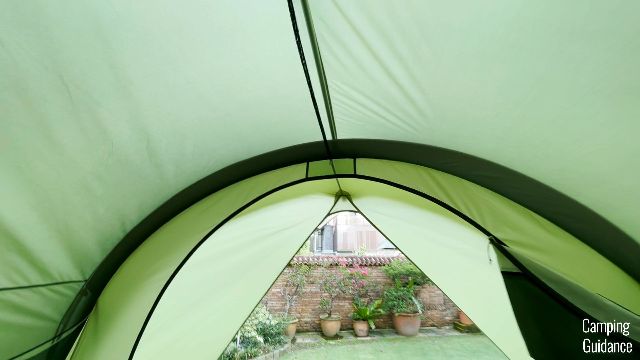
And honestly, these are the tiniest vents I’ve ever seen in my life, and I didn’t feel like they helped very much at all. I wouldn’t even consider them to be vents.
14. Wind Protection
Wawona 6
Moving away from rain, and on to wind protection, I was able to test my Wawona in light to moderate winds of about 10-15 miles per hour, and it held up like a champ.
I had almost the entire tent guyed out, so that really helped. I love that each length of this Wawona 6 can be held down by 5 guylines, plus 1 more guyline at the vestibule, so a whopping 11 guylines in total.
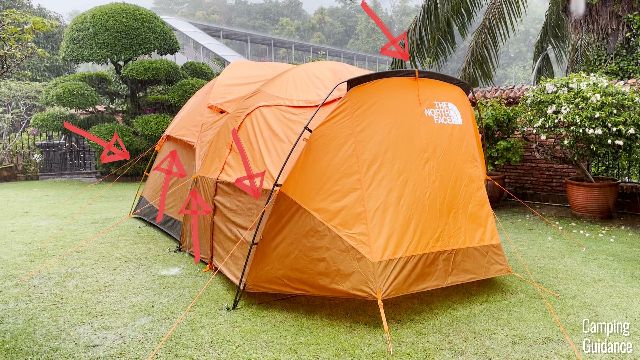
Also, this Wawona is mostly dome-shaped, which sheds wind pretty well.
Wonderland 6
On the other hand, cabin tents are definitely not as great in wind as dome tents, because of their vertical side walls, which don’t shed wind as easily, and the Wonderland is easily a cabin tent.
I do want to mention that the Wonderland has a whopping 14 guy-out points for 14 guylines, which is much better than most cabin tents that I have.

So, compared to other cabin tents, I think that the Wonderland would survive much better.
15. Pole Quality
Wawona 6
As for pole quality, easily the better quality poles are the Wawona’s, which is DAC MX, top-of-the-line type of aluminum poles. These poles not only snap together super easily, but they’re also a lot stronger than regular aluminum poles.
In the weeks that I spent testing my Wawona 6, through crazy rains and some winds, none of my poles bent at all, even in the slightest. The last pole in the picture below is supposed to be bent.
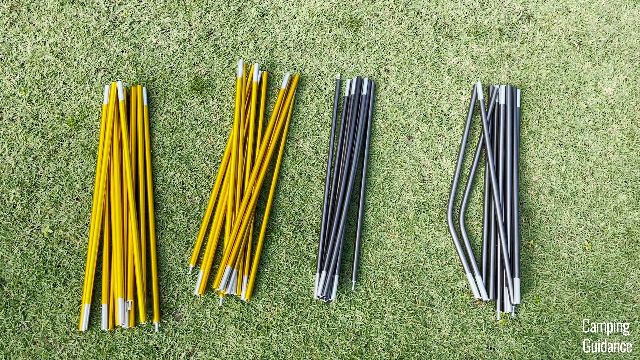
Wonderland 6
On the other hand, the Wonderland has just regular aluminum poles, not DAC MX. These poles are not as strong, a little bit softer, and more likely to bend after some extended use.
In fact, I found that 2 out of 5 of my Wonderland’s poles bent quite a bit.
One of the poles is this orange pole, for the sides of this Wonderland, and as you can see, it’s bent quite a bit at one end.

The other pole is my Y pole, which is basically this Y-shaped pole, and the end of it is bent quite a bit as well.

And this just from using it in my yard, and I honestly don’t usually camp in very strong winds or very crazy weather.
16. Carry Bag
And here’s a couple of other smaller points where the Wawona trumps the Wonderland.
First, the carry bag.
Wawona 6
The Wawona’s carry bag is designed really nicely, it has a very huge top-loading opening, and I found it incredibly easy to get everything back in because of this super huge opening.
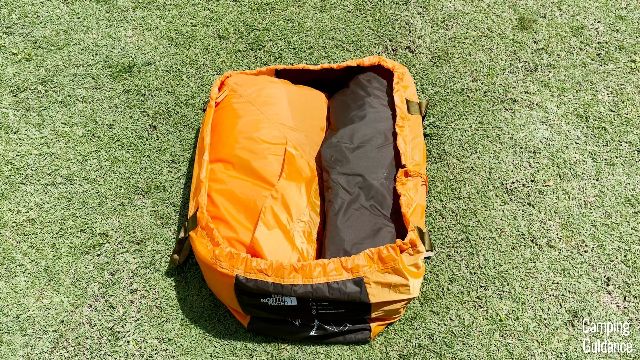
Wonderland 6
As for the Wonderland though, it’s a side-loading carry bag instead with a smaller opening.

So, it took me 16.5 minutes to pack away the Wonderland, and just 14 minutes to pack away the Wawona.
17. Weight
And second, the Wonderland weighs 23.6lbs., while the Wawona weighs 19.4lbs., which is more than 4 pounds less.
I think this might be because of the DAC MX poles, they’re supposed to be more lightweight than regular aluminum poles, on top of being stronger and more user-friendly as well.
Recommendation
Overall, if you camp in summer, and you love cabin tents and the livability inside your tents, the REI Wonderland 6 is a really great pick for you, and that’s the best thing about the Wonderland.
Not only can I walk the entire length of the tent with my arm stretched upwards, thanks to the humongous peak height, which you’ll get throughout the entire length of this tent, but I can even stretch my arms sideways, completely horizontal, and still walk the entire length of this tent.


It’s also great for summer camping in fair weather, because of the tons of ventilation that you’ll get.
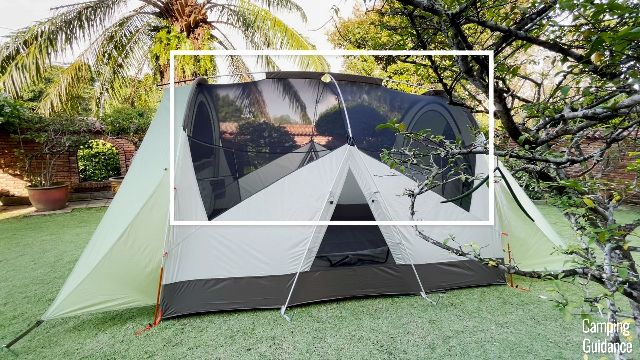
I wouldn’t recommend the Wonderland though, if you’re expecting really heavy rains or any kind of wind. I just don’t think this tent was meant for that. The softer aluminum poles will definitely be wrecked in strong winds, for sure.
And that’s where the Wawona comes in. Again, like the Wonderland, this is only a summer camping tent. But, rain or shine in the summer, The North Face Wawona 6 has definitely got you covered.
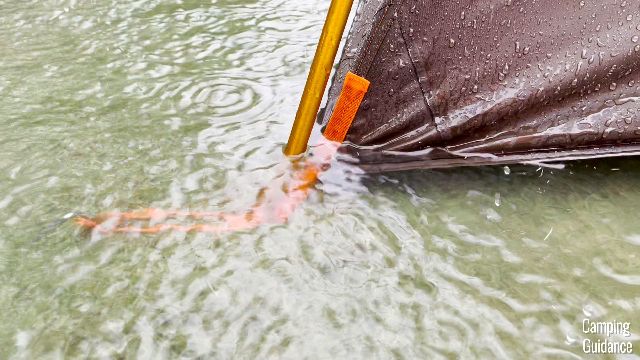
Just don’t expect tons of room inside the tent, it’s meant for at most 3, maybe even 4 adults, at its maximum.

Bonus: Must Read!
For a more in-depth look at how the Wonderland and the Wawona compare not just to each other, but to other 6-person tents in the market, check out this article right here where I spent more than $2,000 and 6 months testing seven different tents.

Or, check out the REI Wonderland 6:
Or The North Face Wawona 6:




